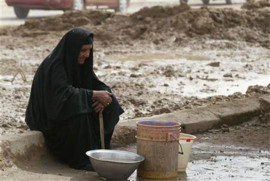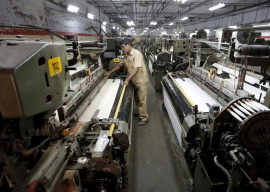
Case in point: Pakistan’s exports had more than doubled in a six-year period between the years 2001-02 and 2007-08, ie, from $9.1 billion to $19 billion but, during the last six years exports have remained range bound between $19 billion and $24 billion and momentarily in the year 2013-14, for the first time in Pakistan’s history they crossed the $25 billion mark. Alarmingly, the static and minuscule share of 1% of the engineering sector in our export basket warrants to be noticed, as it is considered to be a barometer of a country’s technological advancement and industrialisation. Globally, the engineering sector accounts for more than 50% of the world trade and the textile sector only about 6%, where as in our case the inverse is true, perpetuating our inability to carve out a meaningful share in global trade.
To prove this point a comparison is warranted here. In 1995, Pakistan’s exports stood at $8 billion and those of Vietnam at $7.4 billion while the product mix of both countries was almost identical wherein textile and clothing accounted for over 60% of their exports followed by agricultural products and the engineering sector stood at 1% of their total exports. Twenty years down the line come 2016, Pakistan’s exports were $20 billion with the same configuration while Vietnam’s exports rose to a whopping $219 billion with engineering goods accounting for approximately 40% and textile and clothing for 20%.
Where is the disconnect in Pakistan? Why Vietnam, a former least developed and war-torn country, and not Pakistan? What is missing? What are the missing pieces of the jigsaw puzzle? What are the lessons learnt? How do we restore and repair the losses? How do we arrest the declining trend of our exports? What kind of pains need to be sustained? What can we do with the bare minimum of financial expenditure as a cash-strapped country? And finally, do we as a body politic, have the temerity to ask the right question: what policies and regulations are needed to achieve export success and growth?

A simple one-word answer is ‘reform’ while a complex multipart answer is as follows: Policymakers have no choice but to address a wide range of national issues, including creating an enabling business environment (competition, investment, institutions, etc); providing competitive access to infrastructure (energy, communications, transport, etc); facilitating reliable and efficient movement of goods to destination markets; and ensuring product compliance with quality and sanitary and phytosanitary standards.
Reform is improbable in the short term and reform process must strike the right balance, which is why stakeholders must have a buy-in and agree to work with the pain that results from long-term reform. Fortunately, though the pain only lasts for so long as it’s a necessary adjustment for export-led growth.
Unfortunately, every time the government of Pakistan has mustered the will to introduce reform, it has been successfully scuttled by a stronger will to stave off the short-term impact on unsustainable revenue generation. This has time and again, prevented medium- to long-term solid economic gains, loss of viable employment and export growth.
It is an unarguable fact that in order for a trade regime to spur industrial growth, enhance export competitiveness and increase exports, the revenue policy, trade policy and industrial policy of a country need to be in sync and work in a hand in glove scenario. In the case of Pakistan, there is a dearth of cohesiveness between the revenue policy and the trade policy to say the least and secondly, alarmingly enough there is no national industrial policy, a phenomenon not found elsewhere on the planet. Hence, the need for a congruent, comprehensive and integrated approach towards export enhancement is more pronounced in the case of Pakistan.
Different approaches have been taken by both developed and developing countries towards finding the right mix of reforms and tools for achieving export competitiveness, with varied degrees of success, eg, some countries have added the ‘investment’ portfolio to their trade ministries while others have included the ‘industries’ portfolio to their trade ministries’ portfolio and yet others have amalgamated all the three under one ministry. Whatever the combination, the impetus being, the creation of policy institution, capable of holistically designing and implementing an integrated national policy and strategy for trade and industrial development and attracting investment flows. A new approach is needed.
The article is Part 1 of a two part series on trade and commerce in Pakistan: where is the national interest?
Published in The Express Tribune, December 16th, 2017.
Like Opinion & Editorial on Facebook, follow @ETOpEd on Twitter to receive all updates on all our daily pieces.











































COMMENTS (1)
Comments are moderated and generally will be posted if they are on-topic and not abusive.
For more information, please see our Comments FAQ